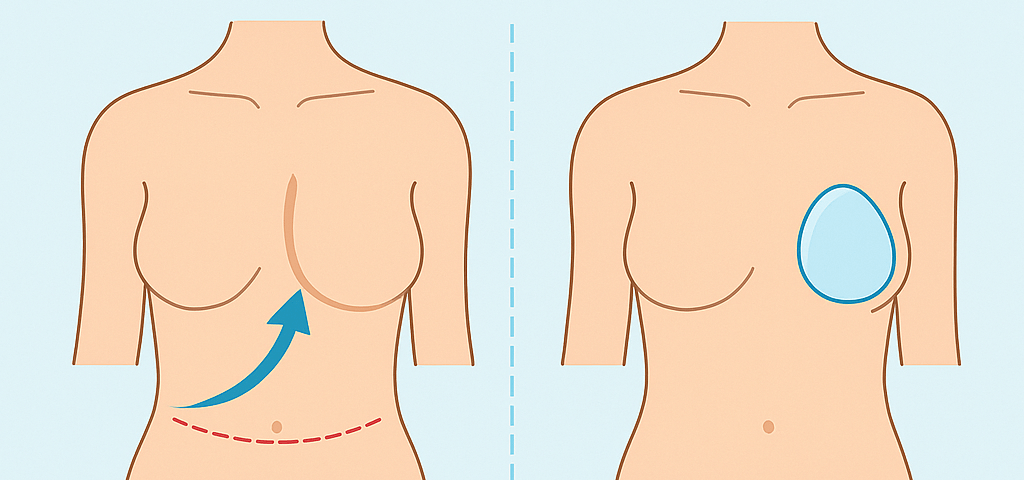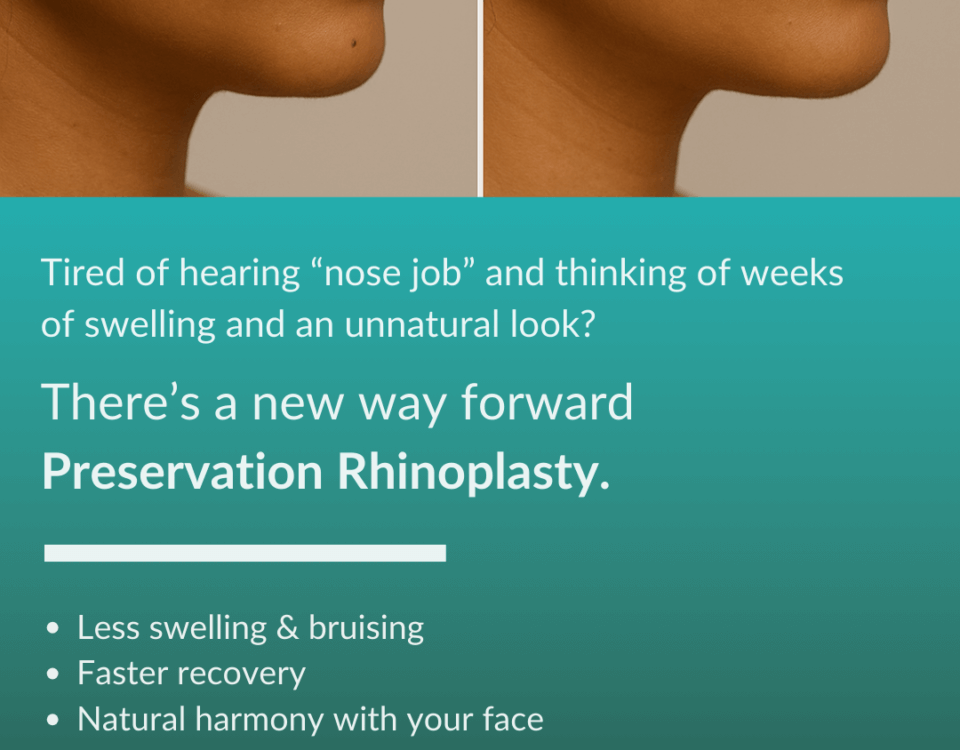Introduction
A breast cancer diagnosis is life-changing, and for many women, mastectomy (surgical removal of the breast) is part of their treatment journey. While it helps fight cancer, it can also impact self-confidence and body image. Breast reconstruction offers a way to restore the shape of the breast after cancer surgery.
The two most common reconstruction methods are:
- DIEP Flap Reconstruction (using your own abdominal tissue)
- Implant-Based Reconstruction (using silicone or saline implants)
Both options have advantages and considerations. Let’s explore them in detail so you can make an informed decision.
What is DIEP Flap Breast Reconstruction?
The DIEP flap (Deep Inferior Epigastric Perforator) procedure uses skin, fat, and blood vessels from your lower abdomen to reconstruct the breast. Unlike older flap surgeries, DIEP spares the abdominal muscles, which helps with faster recovery and less weakness.
Benefits of DIEP Flap:
- Uses your own natural tissue (no foreign implants).
- Results look and feel more natural.
- Long-lasting, no need for replacement.
- Tummy tuck effect (flatter abdomen).
Considerations:
- Longer surgery and recovery time.
- Requires microsurgical expertise (specialized surgeon).
- Not suitable if you don’t have enough abdominal tissue.
What is Implant-Based Breast Reconstruction?
This method uses silicone or saline implants to recreate the breast mound. It may involve a tissue expander before placing the final implant.
Benefits of Implants:
- Shorter surgery and faster recovery.
- Widely available and less complex.
- Predictable size and shape.
Considerations:
- May need replacement in 10–15 years.
- Risk of capsular contracture (scar tissue hardening).
- May not look or feel as natural as tissue-based reconstruction.
- Radiation therapy can increase complications with implants.
DIEP Flap vs. Implant Options: Side-by-Side Comparison
| Factor | DIEP Flap Reconstruction | Implant-Based Reconstruction |
|---|---|---|
| Source of Tissue | Patient’s own abdominal skin & fat | Silicone or saline implant |
| Natural Look & Feel | Very natural | Less natural |
| Longevity | Permanent | May require replacement |
| Surgery Duration | 6–8 hours | 2–3 hours |
| Recovery Time | Longer (4–6 weeks) | Shorter (2–3 weeks) |
| Risks | Microsurgical failure, abdominal complications | Capsular contracture, rupture, infection |
| Ideal Candidates | Women with enough abdominal tissue, prefer natural results | Women wanting shorter surgery, unsuitable for flap |
How to Choose the Right Option?
The choice between DIEP flap and implants depends on:
- Your body type and available tissue.
- Previous or planned radiation therapy.
- Desired look and long-term maintenance.
- Your health and recovery preferences.
A consultation with a specialized plastic surgeon in Mumbai like Dr. Tushar Thorat will help you evaluate the best option tailored to your case.
FAQs on Breast Reconstruction
1. When can I undergo breast reconstruction after cancer?
Reconstruction can be immediate (during mastectomy) or delayed (months/years after treatment).
2. Is breast reconstruction safe?
Yes, when performed by an experienced plastic surgeon, both DIEP flap and implants are safe with manageable risks.
3. Will I lose sensation in my reconstructed breast?
Some sensation may return over time, but it may not be the same as before surgery.
4. Can I have reconstruction if I had radiation therapy?
Yes, but DIEP flap is usually preferred as radiation may increase implant complications.
5. Does insurance cover breast reconstruction?
In many cases, yes. It depends on your policy and medical necessity.
6. How long will it take to recover?
- Implants: 2–3 weeks.
- DIEP Flap: 4–6 weeks, sometimes longer.
7. Which option gives the most natural result?
The DIEP flap offers the most natural look and feel since it uses your own tissue.
Choosing between DIEP flap vs. implants is a personal decision that depends on your health, body type, and goals. If you’re considering breast reconstruction in Mumbai, book a consultation with Dr. Tushar Thorat at Sir HN Reliance Hospital to discuss your options and find the best approach for you.





